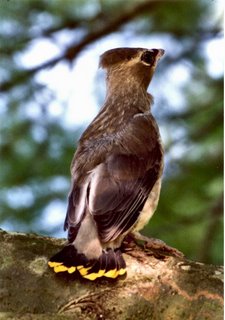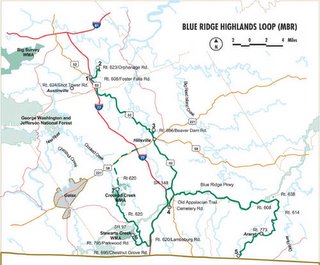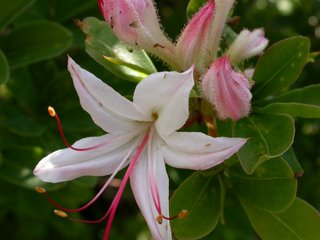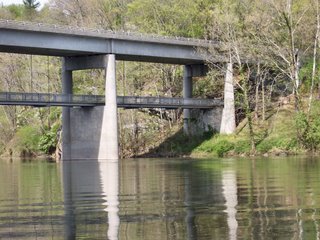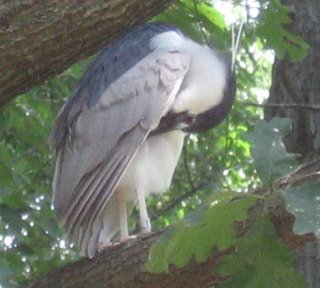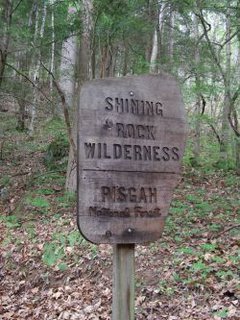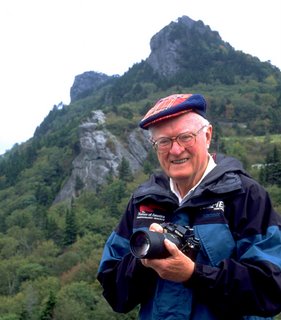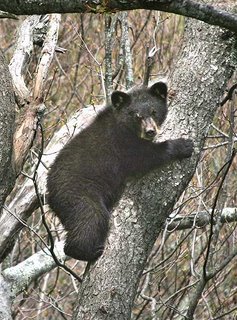 Image: by D. L. Ennis
Image: by D. L. EnnisMontebello means “beautiful mountain” and is, still today, a small community inhabited by the typical hardy immigrants who settled the Blue Ridge Mountains in the late 1700’s. The community, located in Nelson County, Virginia, is nestled within the scenic beauty that is indisputable in this region of the United States.
In the mid to late 1970’s I spent quite a bit of time in the Montebello area, living among the area's native people and the many “gypsy” like construction workers (back then they were called hippies) who had come to the area to work at the new Wintergreen Resort that was being built nearby.
This quaint little community has changed very little since my time there with the exception of the post office, which in the Seventies resembled an outhouse, but is now an approximant 15’x20’ brick building. Still, as it has been since the 1800s, the most important man made structure in Montebello is the country store.
The country store is now at the center of the
Montebello Camping & Fishing Resort. In the 1800s the country store was the Montebello mercantile owned and operated by Richard and Dolly Cash Seaman. The Seaman’s daughter Flora married Handsford Grant of Irish Creek, (just across the mountain in Rockbridge County) a farmer and timber man.
Flora and Handsford had five children and lived in the Irish Creek area for a while in a large white house. Flora was an enterprising lady of many talents. She not only delivered babies but delivered mail by horseback at Irish Creek.
In the thirties, Hansford and Flora bought the store and the two-story white house next door from her parents, Richard and Dolly Seaman. Flora, as a second generation, mostly ran the store but when she taught school at Fork Mountain, Handsford and her Uncle, Sam Cash, took over.
The late Henry Campbell said he remembered how good Flora was to the mountain people. She helped them to read and write their correspondence, advised them when they had to go to court, etc. Madeline Grant, her daughter-in-law, said Flora kept a running account for the mountain people who needed it during the depression. Most of them paid her when they could but some never did.
Flora was the more social one of the couple. She kept abreast of what was going on the community. Social activities often were centered on the vicinity of the store; like Sunday afternoon ball games and tent revivals.
After Flora and Hansford died the store was closed for a period. When Wilson, their son, retired from the Blue Ridge Parkway Service, he and Madeline, Wilson’s wife, moved back to Montebello to be near their children.
Wilson and Madeline helped their son, Charles open the Montebello Campground and more space was added to the original Grant store. They welcomed campers and served neighbors for over 20 years. When Wilson’s health deteriorated, Charles and his wife, Vicki, took over the store again and remodeled. Madeline still helps in the store which is a wonderful coming together of old and new. Montebello has been richer for having four generations of the Grant and Seaman family live and serve in Nelson County.
Things to do:There is plenty for visitors to do in the Montebello area of Nelson County. One of the most visited and also billed as the tallest, waterfalls is in the area.
Crabtree Falls, the highest vertical-drop cascading waterfall east of the Mississippi River features a series of five major cascades and a number of smaller ones that fall a total distance of 1,200 feet (The name "Crabtree" is thought to have come from William Crabtree, who settled in the area in 1777.)
The land at the base of the falls was almost developed as a resort area in the late 1960s, but the residents of Nelson County encouraged the Forest Service to acquire the falls so it could be enjoyed freely by future generations. Money was secured from Congress to purchase the land and improve the safety and accessibility of the area around the falls.
The nearby
Wintergreen Resort offers a host of year around activities from winter skiing and snowboarding to tennis and golf year round.
The
Appalachian Trail runs through Montebello and from there you can take a 1.3 mile moderately strenuous hike from the Montebello Fish Hatchery up to the Appalachian Trail and to Spy Rock; which probably offers the best viewpoint in the central Blue Ridge. The rock outcrop, at 3,980 feet elevation, provides a 360 degree panoramic view of numerous mountain summits. There is a small parking lot, for hikers, available beyond the hatchery buildings.
There are many historical attractions all within an easy driving distance of Montebello. You may want to visit
Ash Lawn; the home of James Monroe; or
Monticello; home of Thomas Jefferson. The
Oak Ridge Estate is the largest private estate in Virginia and there is
Wades' Mill; a working flour mill, c. 1750. Also, you can visit
Walton's Mountain Museum; located in the old Schuyler Elementary School across the street from the boyhood home of Earl Hamner.
You can pick your own fresh fruit in season at
Dickie Brothers Orchard, Drumheller's Orchard or Fitzgerald's Orchard, all family owned orchards.
If you like visiting wineries there is
Afton Mountain Vineyards where you can taste award-winning wines, tour the cave and experience the beauty of the Blue Ridge and, they have gourmet picnic foods and picnic facilities available.
Hill Top Berry Farm & Winery is a small family farm & winery featuring "true to the fruit" Virginia wines.
Mountain Cove Vineyards and Winegarden is Virginia's oldest continuously operating winery. There is
Rockbridge Vineyard which is located in the historic and beautiful countryside of Rockbridge County and produces fine Virginia wines, which have won many awards in national and state competitions.
Veritas Winery is nestled in the foothills of the Blue Ridge Mountains with a recently planted 20-acre vineyard that is ideally located on southeast facing slopes. Then there is the
Wintergreen Winery, where you can experience renowned hospitality and award-winning wines while soaking in panoramic mountain views at this family owned and operated winery and vineyards.
Places to stay:If you are a camper you can stay right in the heart of Montebello at
Montebello Camping & Fishing Resort. Their campground has sites available for tent camping as well as campers, RVs and trailers needing full hook-ups. They also have cabins for rent featuring beautiful views of the mountains on their private lake. They have a pavilion that can be used for church retreats, family reunions or other group events. The Country Store has a full line of groceries including ice, gas and camping supplies. The lake has several fishing docks and a beach area where campers can swim. They also have paddle boats and kayaks for rent on the lake. Each campsite has a picnic table and fire ring. Pets are welcome, but must be kept on a leash. Located in Montebello, Virginia 24464 (540) 377-2650
If it is a Bed and Breakfast that you prefer there are many in the area all offering an experience, unique to the area. The
Dutch Haus is one B&B and is a log house combining Dutch and Pennsylvania German cultures. They are located just 3 miles from the Blue Ridge Parkway at milepost 27, 2.5 miles from the Appalachian Trail and are surrounded by the George Washington National Forest. Here you can relax in comfort and quiet seclusion and as the weather turns cooler, curl up by the stone fireplace in the living room with its open beam ceiling and large picture window. You will enjoy their glass enclosed porch and dining area overlooking the forest while watching the squirrels, chipmunks, hummingbirds, and other wildlife. On their front porch swing or rocking chairs, you will see rabbits or deer as evening approaches and after a mountain sunset view the brilliant night sky, unaffected by light pollution.
Another B&B you may enjoy is
Humming Frog Lodge in Montebello, just off the Blue Ridge Parkway, the Humming Frog Lodge offers 5 acres of scenic grounds including four ponds, a grand flagstone fireplace, hot tub, and more. It is cozy enough for that romantic getaway, yet sleeps 8 people for the family gathering.
Montebello resides in a beautiful and historic area with many other things to do, nearby places to visit, and other wonderful places to stay. If you are looking for a getaway in the Blue Ridge Mountains of Virginia make Montebello one of your stops!
Montebello is located on Route 56 in Nelson County, Virginia, not far from the Blue Ridge Parkway.














